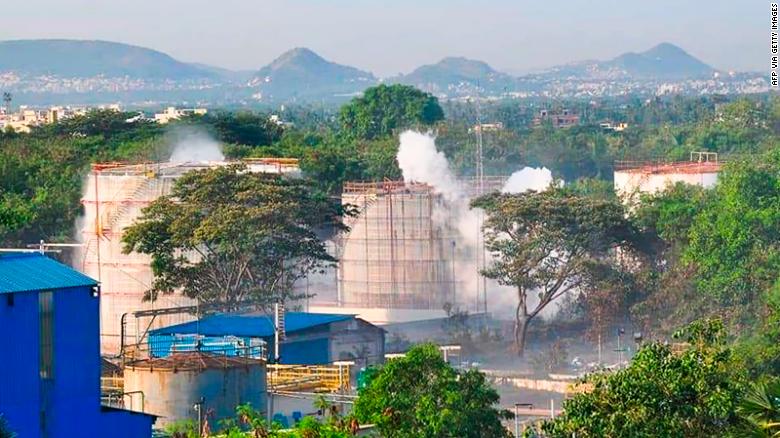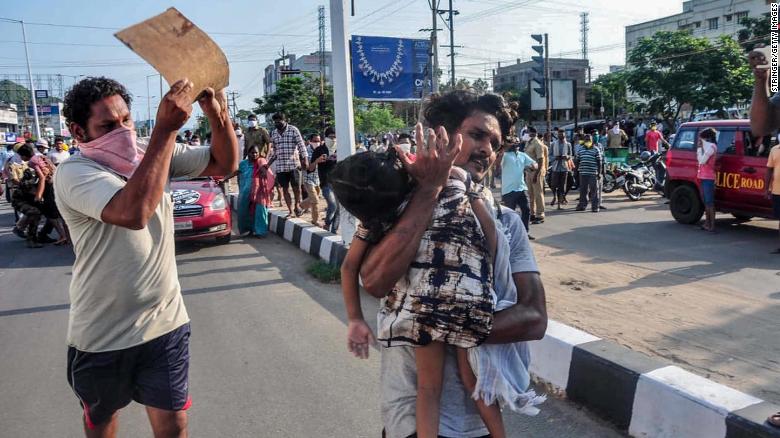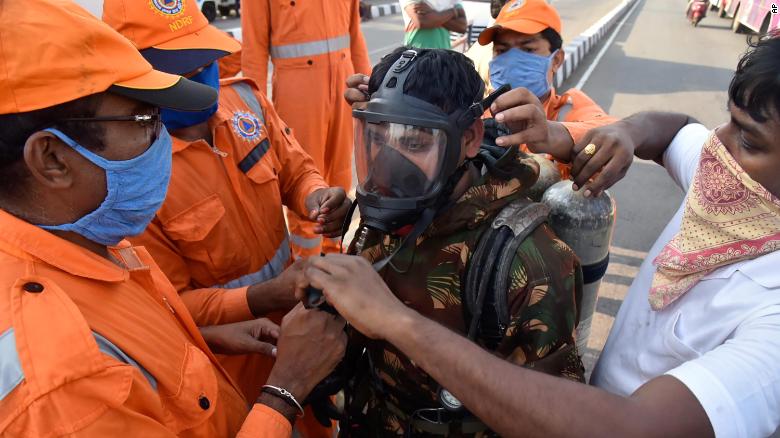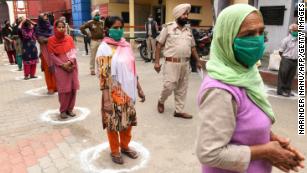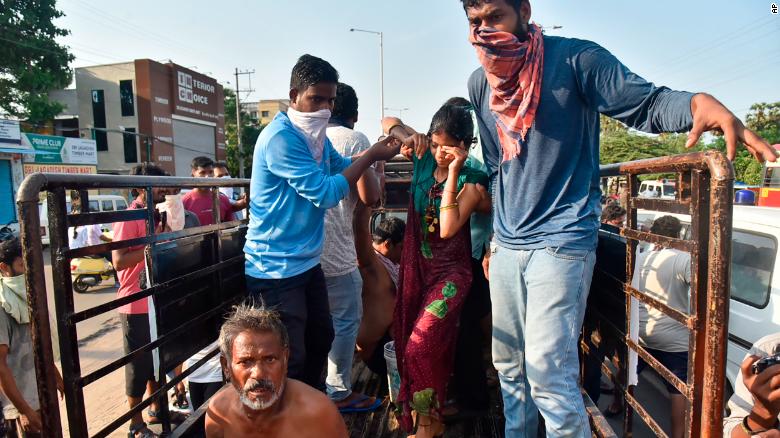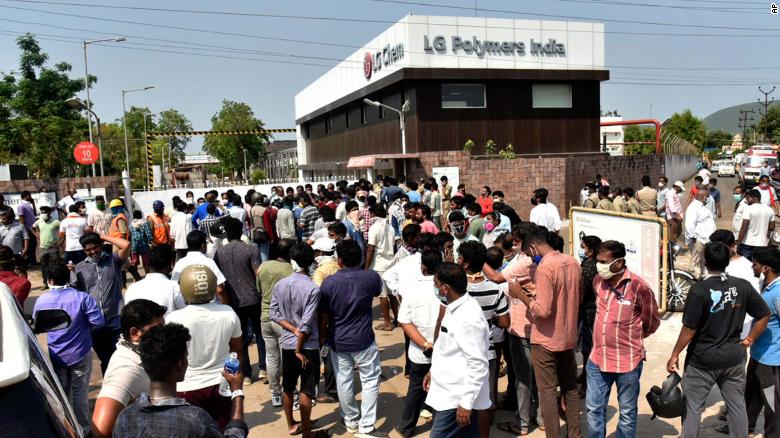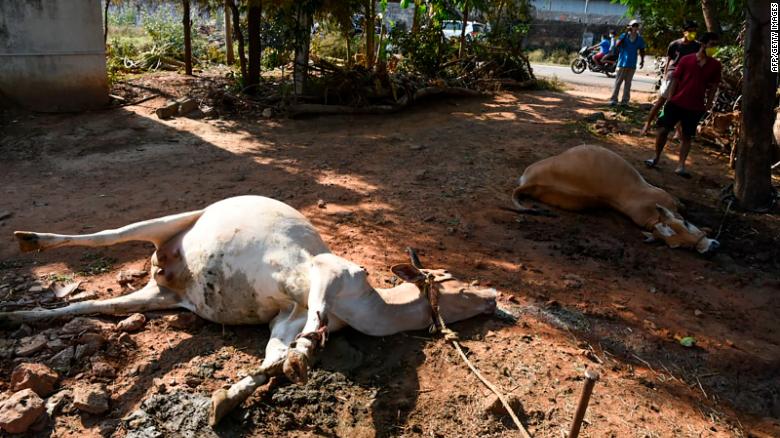By BOBBY CAINA CALVAN today

1 of 15
In this Wednesday evening, May 6, 2020 photo, a Florida forestry tractor trailer is parked in Walton County, Fla., near a hot spot from a wildfire. Authorities say firefighters in the Florida Panhandle battled wildfires through the night that have forced hundreds of people to evacuate from their homes. The more than 575-acre fire in Walton County prompted about 500 people to evacuate. (Devon Ravine/Northwest Florida Daily News via AP)
VIDEO AT THE BOTTOM
MILTON, Fla. (AP) — All day it had been sunny. Then it grew dark as the winds began to whip. Daniel Felder stepped out into the road to watch the acrid smoke billow toward him. Ash started raining from the sky like light snow drifting in twilight.
Then came the crackle of fire, and he knew it was time to run.
“Next thing you know, the fire was right there,” said Felder, 45, recounting the harrowing minutes Wednesday afternoon when a raging fire swept through his bucolic wooded neighborhood in Florida’s Panhandle.
Unable to flee, Felder and his landlord waded into a nearby pond until the fire passed.
The house was spared, but the fire took down a barn and turned the surrounding trees into a charred forest of blackened trunks.
The blaze near Milton, Florida, was one of several fires burning through the Panhandle that scorched thousands of acres of woods, razed dozens of structures, including homes, and forced some 1,600 people to evacuate from their neighborhoods.
The 2,000-acre (809-hectare) fire in Santa Rosa County, located just east of Pensacola, prompted the evacuation of 1,100 homes Wednesday. Officials said a few of those residents, in areas south of Interstate 10, have been allowed to return to their homes, although others have been told to stay away. There have been no reports of injuries or deaths.
Officials said 13 homes were destroyed so far in the fire dubbed the Five Mile Swamp Fire. Because of the coronavirus pandemic, some evacuees were sent to nearby hotels to avoid potential problems with crowding.
Firefighters continued battling the erratic fire deep into the night Thursday. With only 35% of the fire contained, it could be days before it can be brought under control, officials said.
A stretch of Interstate 10, northern Florida’s main transportation artery, remained closed in both directions near Pensacola because of smoke.

Gov. Ron DeSantis met with emergency officials at a church parking lot in Milton for an hour Thursday before returning to the state capital of Tallahassee, located about 180 miles (290 kilometers) east.
The fire was feeding on stands of pines in forests strewn with dry needles.
Agriculture Commissioner Nikki Fried said in a news conference Thursday afternoon that fire officials are working around the clock to contain the wildfires.
“The threat is far from over and there is no rain forecasted,” Fried said. She asked residents to stay alert and “be ready for a wildfire impacting their neighborhood.”
Sgt. Rich Aloy, with the Santa Rosa County Sheriff’s Office, was patrolling Wednesday when he and other deputies rescued an older couple trapped by a burning power line. The possibly live wire blocked the two-lane, tree-lined road as smoke engulfed the area. Aloy said he and his deputies just happened upon the couple as they yelled for help.
“Right time, right place,” Aloy said.

In this Wednesday, May 6, 2020 photo, a helicopters carries water to the Five Mile Swamp Fire in Milton, Fla. Authorities say firefighters in the Florida Panhandle are battling wildfires that have forced some 1,600 people to evacuate from their homes. Smoke from the fires caused officials to close a stretch of Interstate 10 in both directions Thursday. (Gregg Pachkowski /Pensacola News Journal via AP)

The Santa Rosa County fire began Monday when a prescribed burn by a private contractor got out of control, Fried said. The conditions created a perfect storm for fire — low humidity and high winds.
“In Florida, when we’re seeing the gusty winds, it’s hurricane season, not necessarily fire season. So the recipe was just right for this fire to make a huge run,” said Ludie Bond, a spokeswoman for the Florida Forest Service.
On four different occasions, she said, the fire made a run for busy Interstate 10. Each time, it jumped the highway and pushed westward by gusts reaching 40 mph (64 kph).
Firefighters were expecting winds to shift and pick up on Friday, adding to the fire’s erratic behavior.
In a place accustomed to hurricanes, officials said many residents were ready to flee when given the word — although scores of people stayed behind, water hoses in hand, to stand against the fire.
Crews from other areas of Florida, including Jacksonville, are assisting firefighters who’ve been working long hours since Monday.
In neighboring Walton County, a 575-acre (233-hectare) fire in Walton County prompted about 500 people to evacuate. Authorities there said multiple structures were lost in the fire, which was 65% contained Thursday morning. Fried said about 33 structures have been damaged so far.
Felder felt fortunate to escape.
“It came close. Lots of trees burned. The home got singed. The barn behind the house was destroyed,” he said.
At the time, his neighborhood was still under voluntary evacuation.
“I knew there was a fire, but it still looked far away,” he said. “But when it got dark, I didn’t know where the fire was. Suddenly it was there.”
When he knew danger was approaching, he ran back into the house to retrieve his cat, Bowser. He heard his landlord hollering for him to head to the pond. He put his cat, shoes and phone in an aluminum boat, and he and his landlord waded into neck-deep water.
“I was afraid, but the panic set in afterward,” he said. “I had never been through anything like this.”





